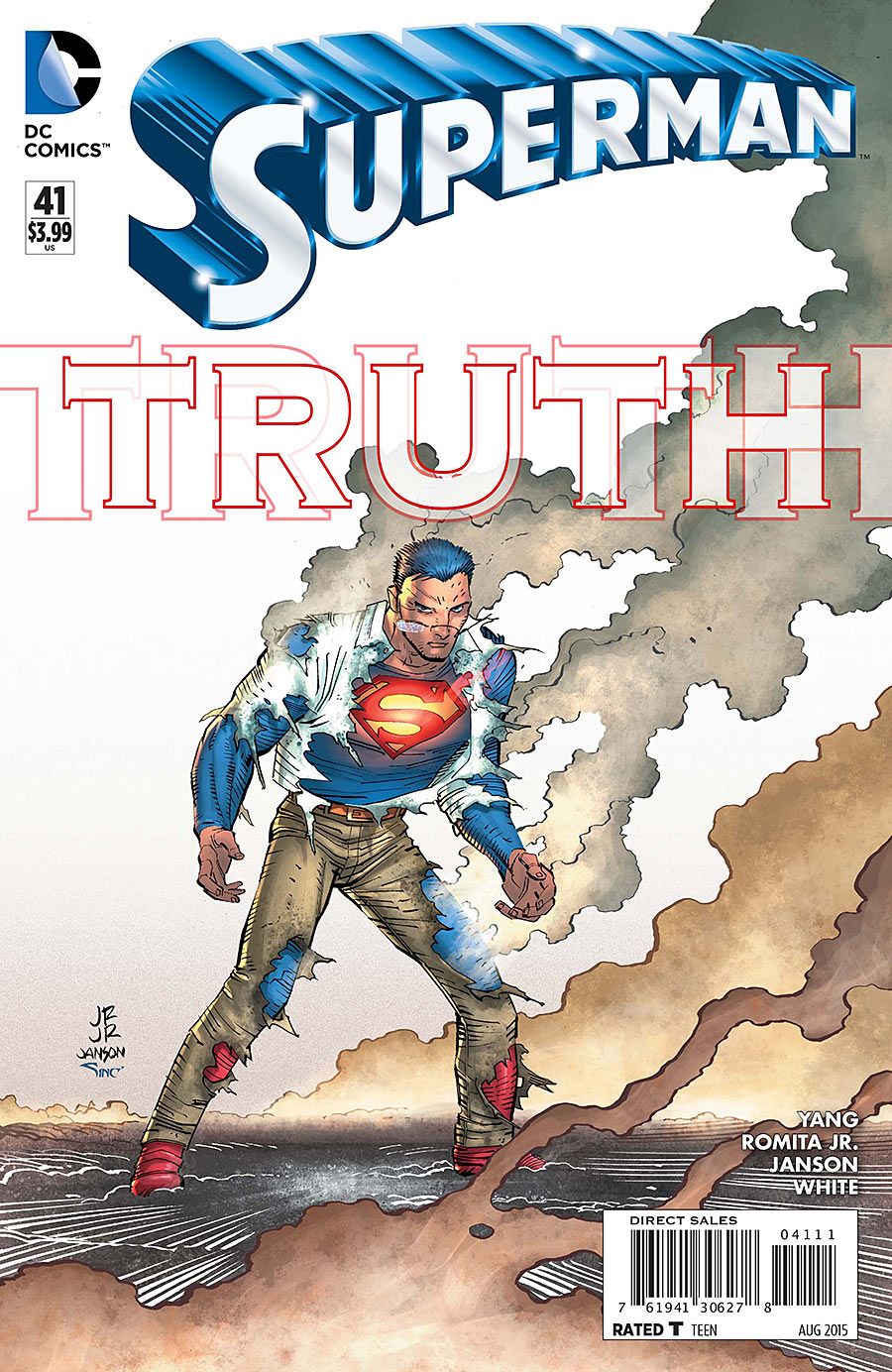Many presumed that new writer Gene Luen Yang's delayed "Superman" #41 would tell exactly how Lois Lane outed the Man of Steel's identity but, upon this issue's close, those details remain unexplained. Readers might recall the conclusion of Geoff Johns' final issue nearly two months ago, where Lois' suspicions were initially raised, and a few days later the word was out as of the release of "Divergence" #1 on Free Comic Book Day. With regular artists John Romita Jr. and Klaus Janson back for this issue, Yang begins to explore those days in between, as Clark is contacted by a stranger who already knows his secret and uses that advantage to blackmail him -- but that development is actually part of what undermines Yang's story.
Yang finds himself with a difficult task on his maiden voyage; he not only has to fill in the spaces between past and subsequent events that have already been told, but he's shackled with something akin to constructing a funny joke that's already had its punchline delivered. It's a punchline that's also been somewhat diluted; Johns recently had Clark already come clean about his identity with Jimmy Olsen, so the idea of such a revelation, even on a smaller, private scale, diminishes some of the impact of this larger one. Compounding this weakness is Yang's own decision to make Clark's secret known to an as-yet unidentified character; such narrow focus on variations of this singular idea makes the issue read like a modern-day homage to Mort Weisinger's days as editor, when seemingly every other Superman story was about his secret identity nearly being discovered.
While the puzzling publishing sequence for the chapters of "Truth" is an oddity that Yang can't be faulted for, there are some perplexing elements within this issue for which he can. Johns recently gave Superman his first new superpower in decades, a power which had been billed as a kind of superhero equivalent of Grandma's sterling silverware that's to be used only special occasions. Yet, Yang resorts to the usage of this power before he's even halfway through the issue, and then further resorts to a contrived explanation that waves away a large part of its consequential side effects.
Yang also puts forth the notion of a technologically advanced 3D printer that can "print" working weapons; it's one that can be grudgingly accepted, but then putting these printers into action as a weapon borders on silly. Yang's questionable idea also doesn't address the logic behind creating a device that's more powerful than the weapons it can manufacture.
Familiar artists Romita and Janson bring some welcome consistency to the issue; Superman's battle against the giant robot printer hybrid is brief but appears pretty intense as laid out. When Clark finds himself adopting a temporarily different and almost ninja-like identity, he still looks almost as imposing as he does as Big Blue, and this development is also actually a nice twist in Yang's story.
The leadoff page, which takes place later in the "Truth" saga before Yang flashes back, sums up the leisurely yet casually adventurous side of Clark, even after his life has been so drastically altered. Superman isn't seen on all that many pages in his standard costume but, when he does appear, colorist Dean White darkens the normally bright and vibrant primary colors of his garb; the effect evokes a kind a dark, foreboding tone of what's to come, even if what's to come is merely another blown secret.
Romita, Janson and White's cover, which shows an exposed Man of Steel, is an iconic and superb interpretation of Superman's vulnerability to one particular truth, but it also serves as a misleading image that goads readers into further anticipating the story they're already expecting but don't receive. While Yang wisely gets things started here and even more wisely doesn't try to squeeze such a monumental event into a single issue, "Superman" #41 largely comes across as a nicely drawn but weakly scripted bait-and-switch.
The idea of Superman's identity being revealed to the world is perhaps the last truly untold story in the character's nearly eight decades of existence, and it's unfortunate that this potentially momentous arc is marred by a jumbled publishing schedule and a weak after-the-fact introduction. This storyline is off to a rocky start and this issue does little to make it smoother.

